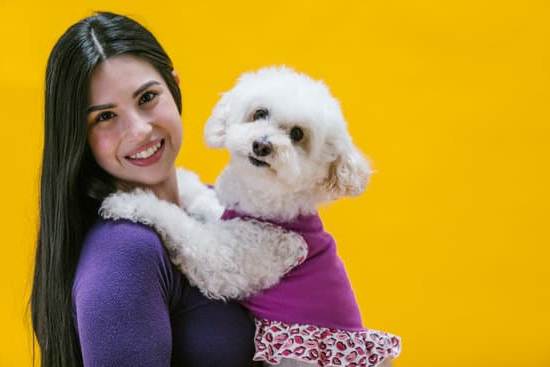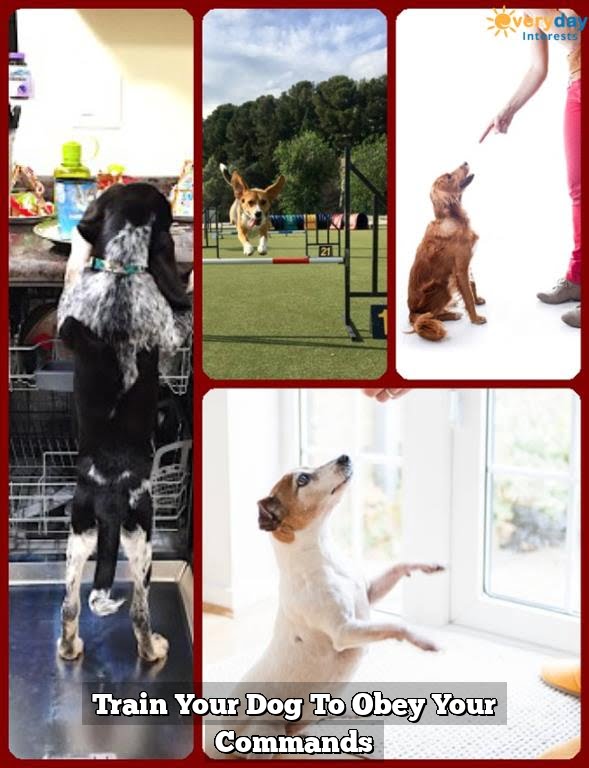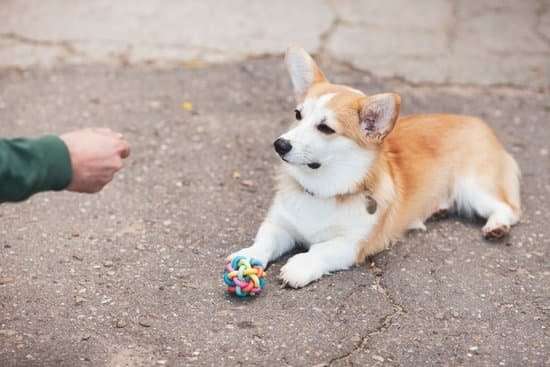Are you looking to train your dog in schutzhund? Schutzhund training is a popular and demanding discipline that focuses on developing a dog’s skills in obedience, protection work, tracking, and agility. This article will provide you with an introduction to schutzhund training, helping you understand the basics, the importance of obedience training, building a strong foundation with basic commands, and much more.
Schutzhund is a German word that translates to “protection dog”. Originally developed as a breed suitability test for German Shepherds, it has evolved into a competitive sport that welcomes all breeds. The training focuses on developing the natural traits and abilities of a dog, ultimately aiming for excellence in obedience and working ability. Understanding the basics of schutzhund and its history will give you valuable insights into this fascinating world of dog training.
Obedience training is the fundamental building block of schutzhund training. A well-trained dog is essential for success in all aspects of schutzhund, from basic commands to advanced protection work.
In this article, we will delve into the importance of obedience training in schutzhund and provide tips on how to build a strong foundation for your dog’s training journey. So, get ready to embark on an exciting adventure as we guide you through the world of schutzhund training for dogs.
Understanding the Basics
Schutzhund, a German word meaning “protection dog,” is a dog sport that was originally developed in Germany in the early 20th century. It was created as a way to test the suitability of working dogs for various tasks such as police work, search and rescue, and protection. Over time, Schutzhund has evolved into a popular sport that tests a dog’s abilities in tracking, obedience, and protection work.
Understanding the basics of Schutzhund involves learning about the three main components of the sport: tracking, obedience, and protection. In tracking, dogs are required to follow a scent trail left by a person over different types of terrain. Obedience training focuses on teaching dogs to respond promptly to commands and perform specific tasks such as heeling, sitting, and staying. Finally, protection work involves training the dog to protect its handler through controlled biting and guarding.
The history of Schutzhund is rooted in the need for well-trained working dogs in Germany during the early 20th century. The sport was initially developed as a way to test the breeding stock for German Shepherd Dogs but has since expanded to include other breeds such as Rottweilers, Doberman Pinschers, and Belgian Malinois. Today, Schutzhund is practiced worldwide and is open to all breeds of dogs that meet the physical and temperamental requirements.
Basic Components of Schutzhund Training
- Tracking: Introducing scent trails and developing your dog’s tracking abilities
- Obedience: Teaching basic commands such as heel, sit, down, stay
- Protection: Implementing controlled bite work under professional supervision
A Brief History of Schutzhund
- Originated in Germany in the early 20th century
- Initially used to test German Shepherd Dogs for suitability in police work
- Expanded to include other breeds and evolved into a popular dog sport
By understanding the basics of what Schutzhund entails and its historical background, you can gain insight into why this sport has become so popular among dog enthusiasts worldwide. Learning how to train your dog in Schutzhund requires dedication, patience, and an understanding of each component’s importance in creating a well-rounded working or sport dog.
The Importance of Obedience Training in Schutzhund
Obedience training is a crucial component of Schutzhund, as it lays the groundwork for all other aspects of the sport. Without a strong foundation in obedience, a dog will struggle to succeed in the more advanced phases of Schutzhund training. Whether you are new to Schutzhund or have experience with other forms of dog training, it is essential to understand the significance of obedience in this discipline.
To begin with, obedience training establishes clear communication between you and your dog. It teaches them to understand and respond to your commands, which is essential for safety and control during Schutzhund activities. Additionally, obedience training helps to strengthen the bond between you and your dog, as they learn to trust and respect you as their leader.
Here are some key obedience training skills that are particularly important in Schutzhund:
- Sit
- Down
- Stay
- Come when called
- Walking on leash without pulling
It is important to remember that successful obedience training requires consistency, patience, and positive reinforcement. Using reward-based methods such as treats, praise, and toys can motivate your dog to learn and comply with your commands. As you progress through Schutzhund training, these foundational obedience skills will serve as the building blocks for more advanced exercises in protection work, tracking, and agility.
Building a Strong Foundation
Schutzhund training is a demanding but rewarding discipline that requires dedication, patience, and consistency. One of the key elements in successful schutzhund training is establishing a strong foundation through basic commands. These basic commands will form the building blocks for more advanced training exercises and are essential for ensuring your dog’s safety, as well as the safety of others.
The first basic command that every dog should learn in schutzhund training is “sit.” This command is not only useful for controlling your dog in various situations but also sets the stage for other obedience commands.
Another crucial command is “heel,” which teaches your dog to walk obediently by your side without pulling on the leash. Furthermore, “down” is an important command that signals your dog to lie down and stay until released, which can be critical in certain schutzhund exercises.
Consistency is key when teaching these basic commands. Additionally, positive reinforcement through treats or praise can help motivate your dog to perform these commands consistently. It’s also important to practice these basic commands regularly to maintain their proficiency and to ensure that your dog understands and obeys them under different conditions and distractions.
| Basic Command | Description |
|---|---|
| Sit | This command instructs the dog to sit on its haunches until released. |
| Heel | Teaches the dog to walk closely by the owner’s side without pulling on the leash. |
| Down | Instructs the dog to lie down on its stomach until released. |
Developing Protection Skills
Teaching your dog the bite work is a crucial part of Schutzhund training. This phase of training focuses on developing your dog’s natural protective instincts in a controlled and disciplined manner. It involves teaching your dog to confidently engage with an aggressor on command, while also being able to release the bite when instructed. The goal is to train your dog to protect you and your family if needed, while still being under your complete control.
To begin teaching the bite work, it’s important to first establish a strong foundation in obedience training. Your dog should have a solid understanding of basic commands such as sit, stay, and heel before progressing to protection work. This ensures that you have full control over your dog during the training process, which is essential for safety and effectiveness.
One common mistake many trainers make in bite work training is using force or intimidation tactics. This approach can lead to fear-based aggression in dogs, which is dangerous and counterproductive. Instead, positive reinforcement methods should be used to teach the bite work. This means rewarding your dog for displaying protective behaviors on command, while also providing clear signals for when to engage and disengage from the bite.
| Training Phase | Description |
|---|---|
| Bite Work | Teaches dogs how to engage with an aggressor on command |
| Obedience Training | Establishes a strong foundation for control and safety during protection work |
| Positive Reinforcement | Rewarding dogs for displaying protective behaviors without using fear or intimidation tactics |
Mastering Tracking and Scent Work in Schutzhund Training
Understanding Tracking and Scent Work in Schutzhund
Tracking and scent work are essential components of Schutzhund training, as they tap into a dog’s natural abilities to follow scents and track objects. In the context of Schutzhund, tracking involves teaching your dog to track a specific scent trail left by a person, while scent work focuses on identifying and searching for various scents. Both skills are crucial for the success of a Schutzhund dog in trials and real-life scenarios.
Training Your Dog for Tracking
To train your dog for tracking in Schutzhund, it is important to start with basic obedience commands like “sit,” “stay,” and “heel.” These commands will serve as the foundation for your dog’s tracking training. Next, introduce your dog to various scent articles that they will be expected to track during competitions. Start with simple scents and gradually increase difficulty as your dog becomes more proficient.
Developing Scent Work Skills
Scent work training in Schutzhund involves teaching your dog to identify specific scents such as human odor, leather, or gunpowder. This can be accomplished through games like hide-and-seek with scented objects or introducing your dog to different scents in controlled environments.
As your dog becomes more adept at identifying scents, you can transition to outdoor settings with varying distractions to simulate real-world scenarios. Consistent practice and positive reinforcement are key to developing strong scent work skills in Schutzhund training.
As you delve into mastering tracking and scent work in Schutzhund training, remember that patience and consistency are crucial for success. By dedicating time and effort into honing these skills, you can maximize your dog’s potential in Schutzhund competitions and ensure their proficiency in real-life applications of tracking and scent work.
The Role of Agility in Schutzhund and Its Training Techniques
Understanding the Role of Agility in Schutzhund
Agility is an essential component of Schutzhund training, as it focuses on the dog’s ability to navigate obstacles with precision and speed. This aspect of training not only provides physical exercise for the dog but also enhances their mental acuity and responsiveness to commands. Agility training in Schutzhund helps dogs develop better coordination, balance, and overall athleticism, which are crucial in various phases of the sport.
Training Techniques for Agility in Schutzhund
To train your dog in agility for Schutzhund, it is important to start with building a strong foundation in basic obedience commands. Once your dog has a solid understanding of commands such as “sit,” “stay,” and “heel,” you can gradually introduce them to navigating agility obstacles such as jumps, tunnels, A-frames, and weave poles. It is essential to use positive reinforcement techniques such as treats, praise, and play to motivate your dog during agility training sessions.
Enhancing Performance in Agility Training
In order to excel in agility for Schutzhund, it is crucial to focus on enhancing your dog’s performance through consistent practice and gradual advancement in difficulty. As your dog becomes more confident and proficient in navigating obstacles, you can increase the complexity of the course and incorporate timing elements to improve their speed. Additionally, incorporating variety into their agility training routine will keep them engaged and motivated to perform at their best during Schutzhund competitions.
Tips for Finding a Schutzhund Training Club and Getting Started
Finding the right Schutzhund training club is crucial for both you and your dog to start on the right foot. Look for clubs or organizations that are recognized by reputable Schutzhund associations to ensure that you are getting quality training and guidance. One way to find a good training club is to attend local Schutzhund events or competitions and speak with participants and trainers to get recommendations.
When looking for a Schutzhund training club, consider the location and schedule of the classes. It’s important to find a club that is convenient for you to attend regularly, as consistency is key in dog training. Additionally, inquire about the experience and qualifications of the trainers at the club. A knowledgeable and experienced trainer can make a significant difference in how well your dog learns and progresses in Schutzhund training.
Before committing to a particular Schutzhund training club, observe a class or two to get a sense of the training methods used, the atmosphere of the club, and how well organized the sessions are. This will help you determine if it’s the right fit for you and your dog.
Once you’ve found a suitable club, communicate with the trainers about your goals for Schutzhund training and discuss how they can help you achieve them with their program. Taking these steps will set you up for success as you begin this journey with your dog in Schutzhund training.
By finding a reputable Schutzhund training club that meets your needs, you can set yourself up for success as you embark on this journey with your dog. The right club will provide guidance on not just basic obedience but also specialized areas such as bite work, tracking, and agility which are essential elements of Schutzhund training.
Remember that consistent practice and dedication will be key in achieving success in this challenging but rewarding sport. As you look into different clubs, keep in mind that it’s not just about finding any place to train-you’re also looking for people who will support you and guide both you and your dog toward mastery of all facets of this rigorous sport.
Ultimately, finding a supportive environment where both you and your dog can learn effectively will play an important role in enjoying this bonding experience through Shutzhand.training.This may involve trials now then but don’t be discouraged because progress takes time.
The Benefits of Schutzhund Training for You and Your Dog
Schutzhund training offers numerous benefits for both you and your dog. Not only does it provide physical exercise and mental stimulation for your canine companion, but it also fosters a strong bond between the two of you. The rigorous training involved in Schutzhund helps to develop your dog’s natural instincts and intelligence, resulting in a well-behaved pet that is responsive to commands and capable of performing various tasks.
One of the key benefits of Schutzhund training is the opportunity for both you and your dog to engage in a challenging and rewarding activity together. As you work alongside your dog to master the various components of Schutzhund, such as obedience, protection, tracking, and agility, you will develop a deeper understanding of each other’s strengths, weaknesses, and communication styles.
This shared experience can strengthen the bond between you and your dog, leading to a stronger partnership and increased trust.
Furthermore, participating in Schutzhund training can also provide you with a sense of accomplishment as you witness your dog progress through each stage of the training process. Whether it’s mastering basic commands or excelling in bite work and tracking exercises, seeing your dog thrive under your guidance can be incredibly fulfilling. Additionally, the discipline and commitment required for Schutzhund training can also instill valuable qualities in both you and your dog, such as patience, perseverance, and focus.
Conclusion
In conclusion, training your dog in Schutzhund requires dedication, patience, and a commitment to excellence. By understanding the basics of this sport and its history, as well as the importance of obedience training, you can begin building a strong foundation for your dog’s success. It is essential to teach your dog basic commands and develop their protection skills through bite work, while also mastering tracking and scent work.
Furthermore, agility plays a vital role in Schutzhund training, and knowing the right techniques can make all the difference in preparing your dog for competitions. Finding a reputable Schutzhund training club and getting started with experienced trainers can provide you with the support and guidance needed to navigate this challenging and rewarding journey.
Ultimately, the benefits of Schutzhund training extend beyond your dog’s physical abilities; they strengthen the bond between you and your furry companion. As you commit to excellence in Schutzhund training with your dog, you are not only investing in their development but also fostering a unique partnership built on trust, communication, and mutual respect.
So whether you aspire to participate in trials or simply want to engage in a fulfilling activity with your canine companion, Schutzhund training offers an opportunity for personal growth and an enriching experience for both you and your dog.
Frequently Asked Questions
Can Any Dog Learn Schutzhund?
Any dog can learn Schutzhund, however, certain breeds are more inclined and suitable for this type of training. Breeds like German Shepherds, Belgian Malinois, and Rottweilers are often the most successful in Schutzhund due to their intelligence and athleticism.
What Are the Exercises of Schutzhund?
The exercises of Schutzhund include tracking, obedience, and protection work. Tracking involves following a scent trail, obedience focuses on the dog’s response to commands, and protection work assesses the dog’s ability to protect its handler.
How Do I Get Started in Schutzhund?
To get started in Schutzhund, first find a local club or trainer who specializes in this type of training. It’s important to start with basic obedience training before moving on to more advanced exercises. Additionally, familiarize yourself with the rules and regulations of Schutzhund competitions if you plan to compete.

Welcome to the blog! I am a professional dog trainer and have been working with dogs for many years. In this blog, I will be discussing various topics related to dog training, including tips, tricks, and advice. I hope you find this information helpful and informative. Thanks for reading!





